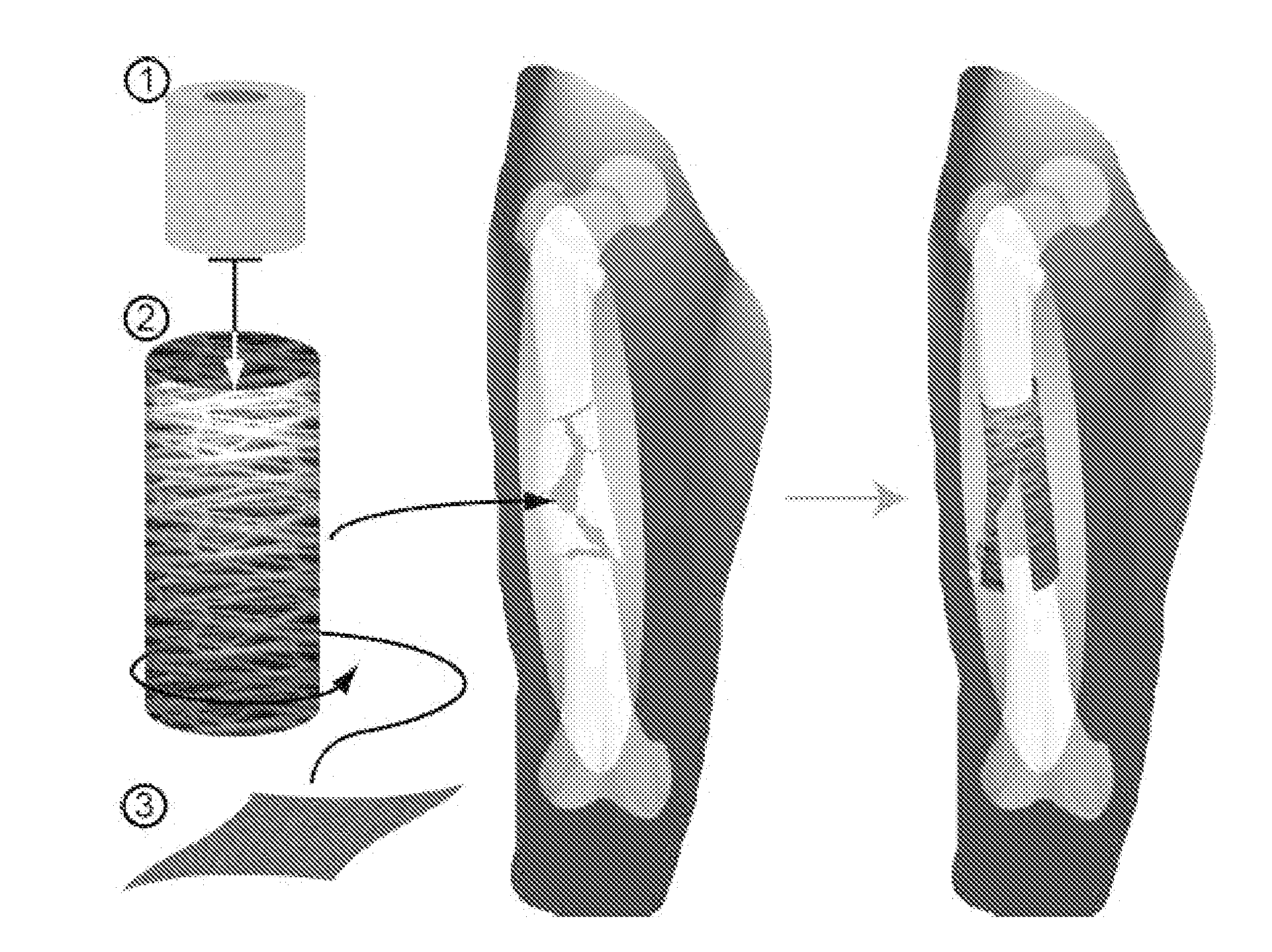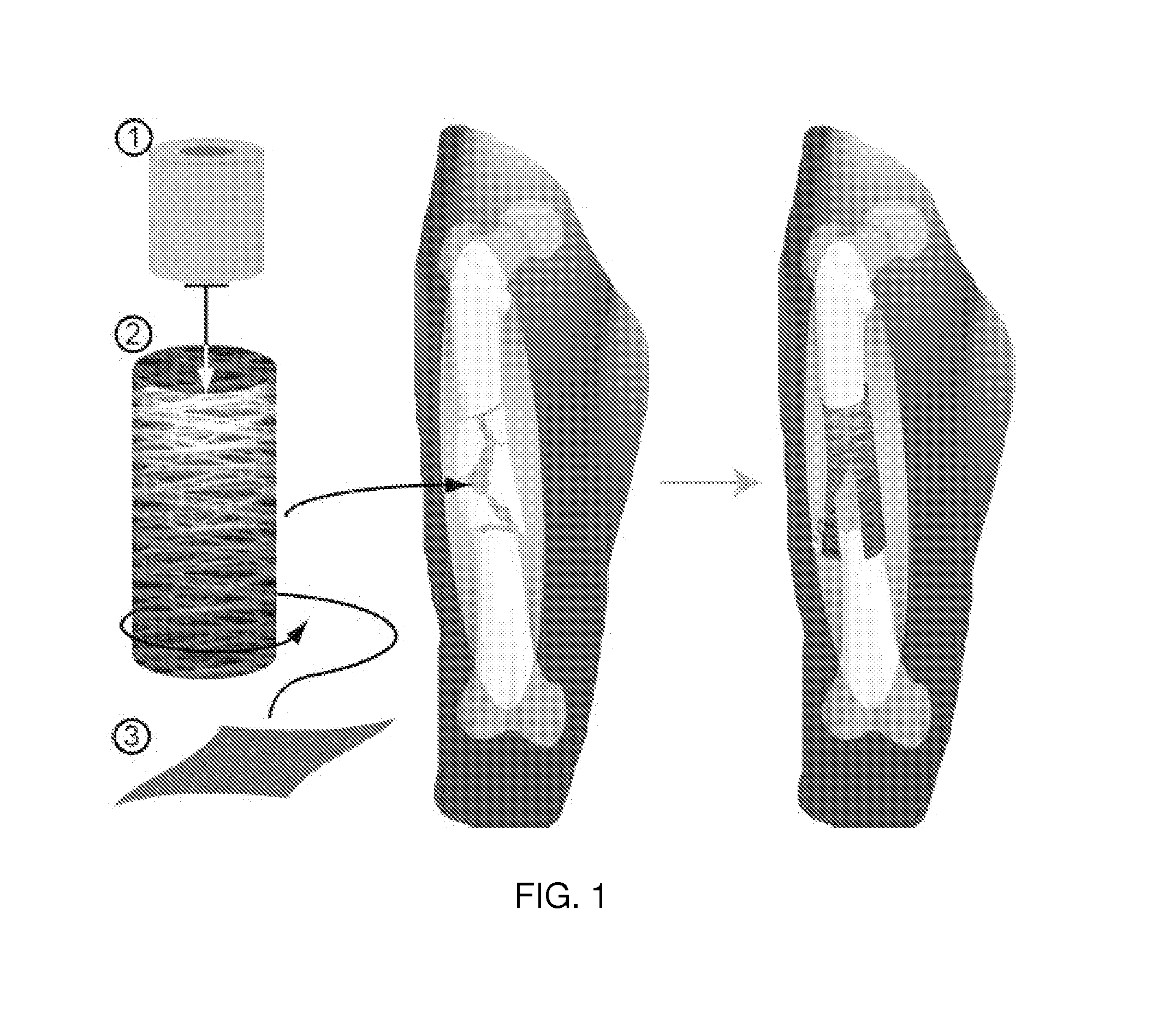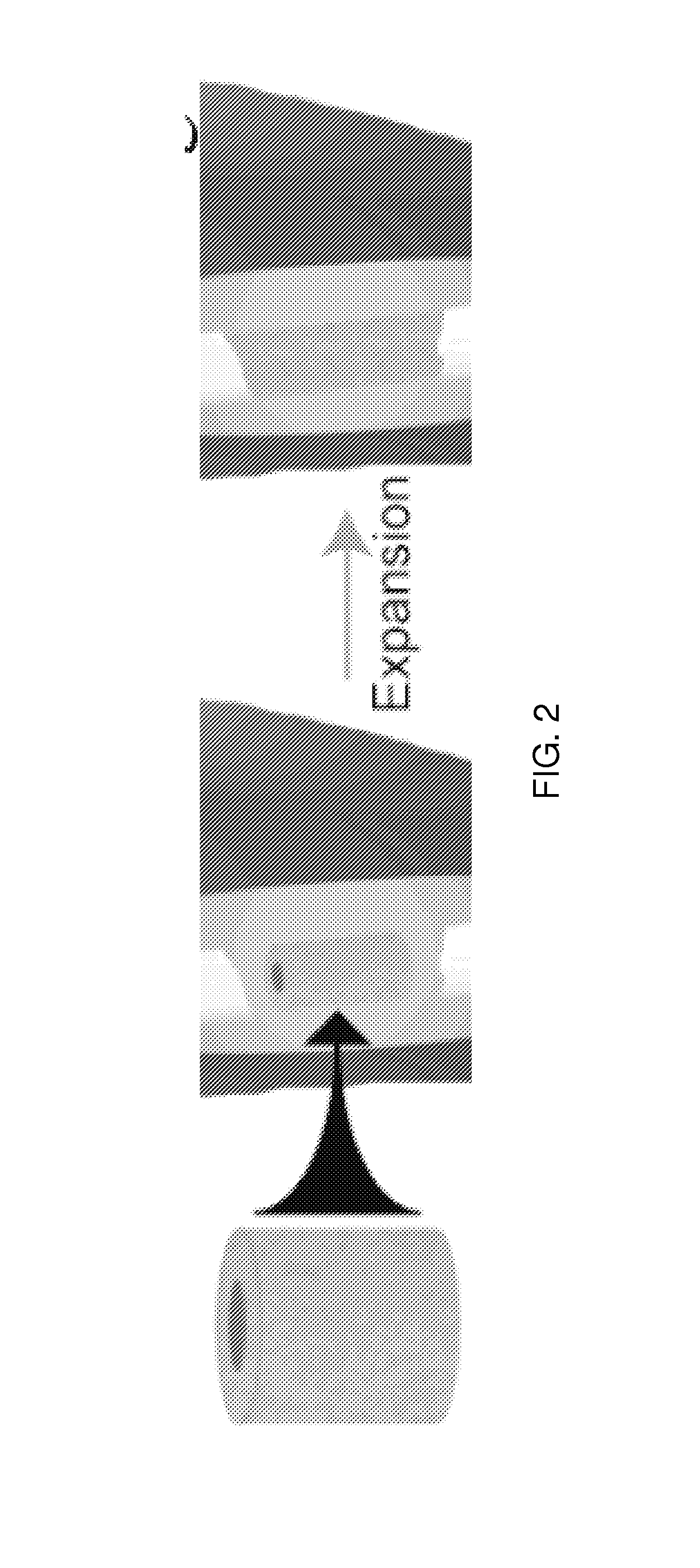Shape-memory-actuated materials for accelerated healing of orthopedic injuries
a technology of orthopedic injuries and memory actuation, applied in the field of bone substitutes, can solve the problems of increasing complexity of orthopedic reconstruction of extremity injuries in warfighters, no reliable treatment, and inability to always choose autologous bon
- Summary
- Abstract
- Description
- Claims
- Application Information
AI Technical Summary
Benefits of technology
Problems solved by technology
Method used
Image
Examples
example 1
SMP Scaffold
[0037]Foam scaffolds were fabricated using a modified porogen-leaching technique. A functionalized poly(ε-caprolactone) (PCL) macromer and a second functionalized hydrophilic macromer based on poly(ethylene glycol) (PEG) were mixed with salt in a 9:1 salt-to-polymer ratio and crosslinked via thiol-ene chemistry using a photoinitiator. After synthesis the salt particles were extracted using water, creating a porous foam scaffold with high porosity.
[0038]The ability of the foam scaffold to fill space was determined by characterizing its shape memory behavior using a dynamic mechanical analyzer (DMA). Circular discs were heated above their melting transition temperature, compressed, cooled to fix the temporary deformation, and then heated back above the melting temperature to expand to the original shape. The resulting fixing and recovery ratios were measured.
[0039]The ability to tune the recovery temperature to a physiological temperature was investigated via two methods. ...
example 2
SMP Scaffold
[0046]Another embodiment of the present invention involves a crosslinked poly(caprolactone) (PCL) scaffold prepared using a porogen-leaching technique. A functionalized PCL macromer was mixed with salt in a 9:1 salt-to-PCL ratio and crosslinked with tetrathiol. After synthesis the salt particles were extracted using water, creating a porous foam scaffold with high porosity.
[0047]Following salt extraction, the melting temperature of the scaffold was determined using differential scanning calorimetry (DSC), and the shape memory properties characterized using dynamic mechanical analysis (DMA). Samples were heated above their melting temperature, uniaxially stretched, cooled to fix the temporary deformation, and then heated above their melting temperature to recover to the permanent shape. The resulting fixing ratio (how much of the deformed strain is maintained upon fixing) and recovery ratio (how much of the temporary strain can be recovered) were measured. Pore morphology...
example 3
SMP Scaffold
[0053]To prepare highly porous scaffolds using a robust and simple technique, a modified porogen-leaching process was employed, similar to a method established by Zhang and colleagues for PCL-block-Polydimethylsiloxane SMP foams. Functionalized PCL and PEG macromers were dissolved in dichloromethane (DCM) and combined with tetrathiol crosslinker and 2,2-dimethoxy-2-phenylacetophenone photoinitiator as seen in FIG. 10. This solution was added to fused NaCl crystals in a 1:9 polymer:salt ratio by weight and UV cured. The fusion of salt particles, prior to the addition of the macromer solution, was performed to improve the pore interconnectivity. Following curing, salt was extracted in water, yielding highly interconnected porous foams with porosities of 79±5% as determined by microtomography. Volumetric shrinkage of scaffolds was observed following the first heating cycle and this shrinkage was dependent on the macromer concentration in DCM.
[0054]The shape memory behavior ...
PUM
 Login to View More
Login to View More Abstract
Description
Claims
Application Information
 Login to View More
Login to View More - R&D
- Intellectual Property
- Life Sciences
- Materials
- Tech Scout
- Unparalleled Data Quality
- Higher Quality Content
- 60% Fewer Hallucinations
Browse by: Latest US Patents, China's latest patents, Technical Efficacy Thesaurus, Application Domain, Technology Topic, Popular Technical Reports.
© 2025 PatSnap. All rights reserved.Legal|Privacy policy|Modern Slavery Act Transparency Statement|Sitemap|About US| Contact US: help@patsnap.com



